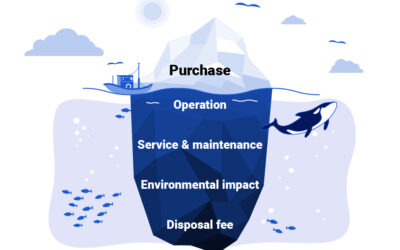In the world of responsible investment, “What is ESG?” has become a pivotal question. ESG investing assesses the long-term impact and business opportunities of companies through a lens of environmental stewardship, social responsibility, and robust governance. As global attention shifts towards climate change and sustainability, investor interest in ESG has been climbing, demonstrated by a notable surge in ESG fund inflows, particularly in 2019 .
These the growing trend of ESG investment echoes a collective drive for recycling resources, mitigating climate risks, and fostering corporate accountability. The approach goes beyond traditional financial analysis by incorporating ESG metrics to evaluate risks and opportunities that financial statements may not reflect. This article navigates the intricate pathways of ESG investment, its growing importance in funding strategies, and the challenges therein, shaping the future of responsible and strategic investment.
What is ESG and Why it Matters
ESG investing is a comprehensive approach to assessing companies and their potential for long-term sustainability and ethical impact. Here’s a breakdown of what ESG encompasses and why it’s a critical consideration for investors:
-
Environmental Factors:
- Climate Change: Companies are evaluated based on their contributions to or efforts to mitigate climate change.
- Pollution and Waste: Waste management practices and pollution control are key indicators of environmental responsibility.
- Natural Resource Use: Efficient use of resources such as energy and water, and actions taken to preserve biodiversity and prevent deforestation are considered.
-
Social Factors:
- Employee Treatment: Fair labor practices and employee engagement are scrutinized.
- Community Impact: How a company interacts with and supports the communities in which it operates is assessed.
- Human Rights and Diversity: A company’s commitment to human rights, inclusivity, and diversity within its operations is evaluated.
-
Governance Factors:
- Corporate Leadership: The structure and practices of a company’s leadership, including its board and audit committee, are important governance metrics.
- Shareholder Rights: How well a company upholds shareholder rights and responds to shareholders’ concerns is assessed.
- Ethics and Compliance: Companies are examined for their efforts to prevent bribery, corruption, and ensure ethical conduct throughout their operations.
The importance of ESG investing lies in its ability to uncover risks and opportunities not visible through traditional financial analysis. By considering ESG factors, investors can:
- Enhance fundamental analysis and make more informed decisions .
- Align investments with personal values and societal impact.
- Potentially achieve superior risk-adjusted returns .
- Prepare for and manage regulatory and environmental changes more effectively.
Furthermore, companies with strong ESG practices are often better positioned to:
- Navigate future environmental regulations.
- Foster positive relationships with employees, customers, and suppliers .
- Implement effective decision-making processes and reduce the risk of fraud and corruption.
ESG investing isn’t just about doing good; it’s about investing wisely. It represents a shift in recognizing that companies that are environmentally conscious, socially responsible, and well-governed are more likely to succeed and provide stable returns over time. As such, ESG investing can fall under various categories, including sustainable, socially responsible, or impact investing, each with a focus on generating positive, measurable social and environmental outcomes alongside financial returns .

The Evolution of ESG Investing
The evolution of ESG investing reflects a growing recognition of the importance of environmental, social, and governance factors in investment decision-making:
- Historical Roots: ESG investing has its origins in the social movements of the 1960s and 1970s. The first publicly available mutual fund in the U.S. that considered social and environmental criteria was the Pax World Fund, established in 1971 as a response to the Vietnam War. This era marked the beginning of investors incorporating social factors into their decisions, paving the way for what would become known as socially responsible investing (SRI).
- Development of ESG Principles: The term “ESG” gained prominence in 2004 with the UN Global Compact and the Principles for Responsible Investment (PRI) initiative, which encouraged the integration of ESG issues into financial analysis. By 2006, the Carbon Disclosure Project (CDP) was launched, prompting companies to disclose their carbon emissions and strategies for addressing climate change. That same year, the United Nations’ PRI report, including the Freshfield Report and “Who Cares Wins,” highlighted the relevance of ESG issues in investment practices.
- Growth and Acceptance: The acceptance of ESG criteria has seen a significant increase, with ESG investments accounting for over a third of professionally managed assets. The number of signatories to the PRI initiative has grown from 63 investment companies in 2006 to over 2450 by 2019, representing more than $80 trillion in assets under management (AUM). This growth reflects a shift in investor priorities, with an emphasis on sustainable and ethical considerations alongside financial returns.
The expansion of ESG investing is characterized by a variety of strategies and tools designed to integrate ESG factors into investment portfolios:
- Diverse Investment Strategies: Investors now have a range of ESG investment strategies at their disposal, including ESG Integration, Corporate Engagement and Shareholder Action, Norms-based Screening, and Best-in-Class/Positive Screening.
- Regulatory Developments: New regulations, such as the EU’s Corporate Sustainability Reporting Directive (CSRD), have emerged, requiring businesses to report on their environmental and social impacts.
- Innovative Tools: The creation of ESG indexes and ETFs provides investors with accessible means to incorporate ESG considerations into their investment decisions.
The trajectory of ESG investing indicates a future where sustainability is not just a niche interest but a fundamental component of investment analysis and strategy:
- Influence on Corporate Behavior: Companies that embrace ESG criteria are demonstrating higher returns and lower risk, while those that do not are experiencing the opposite. This trend is driving businesses to prioritize ESG issues as a way to attract and retain employees, particularly among younger generations who value the principles addressed by ESG .
- Investor Demand and Performance: A global survey revealed that 68% of institutional investors found that ESG criteria led to improved returns, and 77% invested in ESG strategies due to their impact on a company’s financial performance .
- Future Outlook: The emphasis on ESG is expected to continue, propelled by heightened awareness of sustainability issues, regulatory pressures, and the expectations of both institutional and individual investors for companies to commit strongly to ESG criteria.
The evolution of ESG investing is a testament to the shifting landscape of the financial world, where responsible investment strategies are becoming integral to achieving long-term, sustainable growth.
Key Benefits of ESG Investing
Investing in ESG brings a multitude of benefits, impacting not just the financial bottom line but also contributing to the broader societal and environmental good. Here are some key advantages of ESG investing:
1. Financial and Risk Management Benefits:
- Improved risk management: Companies integrating ESG are better at identifying potential risks, equipping them to manage these risks proactively .
- Enhanced portfolio performance: Historical data shows that ESG investments have a track record of outperforming non-ESG investments over the long term, indicating a strong case for ESG as a category in investment portfolios.
- Strengthened regulatory compliance: By focusing on ESG criteria, businesses are often ahead of regulatory changes, reducing the likelihood of incurring penalties.
- Superior risk management: Considering ESG factors can lead to a reduction in investment risk due to better governance and ethical business practices .
- Financial performance: A strong ESG framework can result in better resource management and more stable revenue streams, shielding companies from negative events that could impact stock prices.
2. Environmental and Societal Impact:
- Addressing climate change: ESG investing is pivotal in promoting companies that take serious measures to reduce their environmental impact, thereby contributing to global efforts against climate change.
- Positive societal impact: By supporting companies with positive ESG contributions, investors can drive societal benefits, aligning with the UN’s Sustainable Development Goals.
- Environmental benefits: Investments in ESG-oriented companies support environmental sustainability and can contribute to mitigating climate change.
3. Business and Operational Advantages:
- Greater innovation and adaptability: ESG-focused companies are often more resource-efficient, leading to innovations that can reduce waste, save energy, and lower operational costs.
- Attracting and retaining talent: Companies with high ESG scores tend to have more engaged employees and a culture of respect, which is crucial for talent retention.
- Competitive advantage: Companies engaged in ESG efforts can gain a competitive edge as consumers increasingly prefer environmentally friendly products.
- Customer loyalty: Transparency and effective communication of ESG efforts can strengthen customer trust and loyalty.
- Sustainable operations: ESG strategies help companies adapt to changing landscapes by identifying cost-saving opportunities and reducing energy consumption.
By integrating ESG considerations into investment strategies, businesses and investors not only enhance their financial resilience but also contribute to a more sustainable and equitable world.

Implementing ESG Strategies in Business
To effectively implement ESG strategies in business, a structured approach is essential. Companies can follow these steps to develop and integrate ESG practices into their operations:
-
Materiality Assessment and Baseline Establishment:
- Begin with a materiality assessment to identify which ESG issues are most relevant to the business and its stakeholders.
- Establish a baseline to understand the current state of ESG performance and identify areas for improvement.
-
Setting Goals and Planning:
- Set clear ESG goals that align with the company’s vision and values.
- Create a comprehensive ESG plan that includes strategies for addressing performance gaps and achieving set goals.
-
Implementation and Measurement:
- Implement the ESG plan and integrate ESG factors into the business model and decision-making processes.
- Measure progress using key performance indicators (KPIs) and ensure regular ESG reporting to monitor and communicate performance.
In building an ESG strategy, companies should consider the following best practices:
-
Dedicated ESG Team and Framework Alignment:
- Establish a dedicated team responsible for ESG initiatives.
- Align strategies with global and regulatory frameworks to ensure compliance and relevance.
-
Efficient Data Management and Transparency:
- Invest in software tools for efficient collection and monitoring of ESG data.
- Maintain transparency in the ESG process to build trust with stakeholders.
-
Investor and Supplier Engagement:
- Engage with investors focused on ESG progress to align investment strategies with sustainability goals.
- Collaborate with suppliers and supply chain participants to meet environmental and sustainability commitments.
-
Leveraging Technology for ESG Management:
- Utilize technology platforms like SIOChain™ to engage suppliers and embed sustainability in the supply chain.
- Embrace digital transformation to manage and report ESG data effectively, ensuring compliance and leveraging financial benefits.
-
Financial Mechanisms for Sustainable Development:
- Explore financial instruments such as Green Bonds, Social Bonds, and ESG Linked Loans to support sustainable development priorities.
- Banks can embed ESG strategies into their own business models and promote the low-carbon transition among their clientele.
By adhering to these steps and best practices, companies can not only manage risks but also have a positive impact on the world, fulfilling their environmental and social responsibilities while achieving material, fiscal, and economic benefits.
Challenges and Considerations in ESG Investing
Despite the growing popularity of ESG investing, several challenges and considerations remain that can impede the seamless integration of ESG criteria into investment strategies:
-
Standardization and Data Issues:
- The lack of standardized ESG metrics and reporting can create inconsistencies in how companies report their ESG efforts, making it difficult for investors to compare and assess.
- Investors often face limited access to reliable and comprehensive ESG data, which can hinder their ability to make informed decisions.
- There is a lack of comparability of ESG data across issuers, which complicates the investment analysis process.
-
Operational Challenges:
- Quantifying the financial impact of ESG factors is a complex task, as many ESG benefits or risks are not immediately reflected in financial statements.
- Conducting thorough ESG due diligence requires expertise and resources that may be limited, especially for smaller firms or individual investors.
- ESG program metrics can sometimes be tracked improperly, or the wrong metrics might be tracked, leading to a skewed view of a company’s ESG performance.
-
Engagement and Culture:
- There is often limited engagement with portfolio companies on ESG issues, which can reduce the influence investors have on improving corporate ESG practices.
- Making ESG a part of the company culture is crucial; failing to do so can result in ESG considerations being sidelined or not taken seriously by all levels of the organization.
- Addressing processes or broader systems is necessary for meaningful ESG integration, yet this can be challenging when the focus is solely on immediate financial returns.
Investors and companies also have to navigate the changing landscape of ESG-related regulations and the increasing pressure from regulators, which requires establishing governance structures for compliance and accountability. While these new regulations aim to improve transparency and understanding, they also add complexity to the already challenging task of ESG integration.
Additionally, investors may have to consider the trade-offs associated with ESG investing, such as potentially sacrificing returns from industries like tobacco and defense, which have historically performed well. This highlights the complexity and prioritization challenges within ESG investing, where investors must balance ethical considerations with financial performance.
In summary, while ESG investing presents a promising path towards responsible investment, it is not without its hurdles. Investors must navigate the lack of standardization, data challenges, and the need for deep integration into company culture and processes, all while considering the potential implications on financial returns and adapting to evolving regulatory demands.
The Future of ESG Investing
Looking ahead, the landscape of ESG investing is poised for dynamic growth and transformation. Key trends and projections include:
-
Expansion of Sustainable Investing Strategies:
- Investors can expect a broader range of sustainable investing strategies across various assets and themes, with an emphasis on brands that resonate with younger generations who prefer sustainable options.
- The focus on sustainable brands is particularly strong among these younger demographics, who are increasingly concerned about the ethical and environmental practices of the companies they support.
-
Net-Zero Transition and Resource Demand:
- The shift towards a net-zero global economy will necessitate changes in land use for renewable energy production and conservation efforts.
- This transition is projected to drive a heightened demand for metals and minerals that are essential for renewable energy technologies and electric vehicles.
-
Regulatory Changes and Company Disclosures:
- A global increase in government regulations is on the horizon, aimed at promoting a net-zero economy. These policies will likely compel companies to disclose a wide array of ESG factors, enhancing transparency and accountability.
- Sustainable equity and fixed-income funds are seeing a record increase, reaching 7.9% of global total AUM in the first half of 2023, with a focus on financing issues like gender equity and ocean conservation.
-
Navigating Sustainable Finance:
- The next decade will challenge investors and companies to navigate the complexities of sustainable finance. They will need to make informed decisions, mitigate risks, and capitalize on emerging investment opportunities.
- ESG assets are projected to constitute a third of all global AUM by 2025, signifying the growing importance of ESG considerations in investment decisions.
-
Commitments to Emissions Reductions:
- Governments and corporations are making commitments to achieve net-zero emissions by 2050, with a push for immediate action and transparency in reaching these targets.
- Impact investing is becoming a more popular approach as it allows for a more direct generation of social and environmental benefits.
-
Biodiversity and Operational Risks:
- Investors are increasingly recognizing the importance of biodiversity for long-term sustainability and are considering it as a factor when assessing operational risks.
- Companies that excel in ESG practices are not only seeing higher financial growth and optimization but are also experiencing lower volatility, higher employee productivity, and reduced regulatory and legal interventions.
-
Mandatory ESG Adoption:
- There is a growing possibility that ESG adoption may become mandatory for companies to stay competitive and ahead of regulations.
- This mandatory adoption would ensure that companies are not only compliant with current standards but are also prepared for future regulatory changes.
In summary, the future of ESG investing is characterized by a significant shift towards sustainability, with a strong focus on the net-zero transition, increased regulatory requirements, and the growing influence of investor preferences, particularly among younger generations. Companies and investors alike must adapt to these changes to ensure long-term success and contribute to a more sustainable and equitable global economy.
Conclusion
Throughout this exploration, we have delved into the intricate facets of ESG investing, uncovering its growing relevance in a world more cognizant of ethical, environmental, and social issues. We’ve seen how the incorporation of ESG criteria not only forges a path to more resilient and sustainable investment strategies but also aligns investor values with broader societal benefits. As we witness a shift towards more transparent, accountable business practices, it’s clear that integrating ESG considerations stands at the forefront of modern investment wisdom.
In the financial terrain of tomorrow, ESG principles are set to become even more enmeshed in corporate and investor decision-making. To forge ahead and make an impactful contribution in this evolving sphere, one must consider where to place their investment. With a commitment to ethical practices and sustainability, consider this an invitation to invest in our sustainable company, where your financial aspirations and conscientious values can grow in harmony. This alignment not only serves your portfolio’s long-term vitality but also propels the collective momentum towards a more equitable and sustainable future.
FAQs
What does an ESG investment strategy entail? An ESG investment strategy is an approach to investing that allows individuals to align their investment choices with their personal values, focusing on companies that are conscientious about environmental, social, and governance issues. Investors who adopt ESG strategies prefer to purchase shares in companies that are actively working to improve their practices in these three key areas.
How does responsible investment relate to ESG? Responsible investment in the context of ESG means incorporating environmental, social, and governance considerations into investment decision-making processes. It also includes the practice of active ownership or stewardship, which is the act of influencing the operations and policies of the companies or assets in which one invests.
Can you define an ESG strategy? An ESG strategy is a comprehensive approach adopted by organizations that are committed to operating responsibly on a global scale. It encompasses the three pillars of sustainability: environmental protection, social equity and justice, and strong governance practices. A well-defined ESG strategy is now considered a key indicator of a responsible and future-focused organization.
What is ESG in layman’s terms? ESG, short for Environmental, Social, and Governance, is a criteria set used to assess a company’s behavior and policies regarding sustainability and ethical impact. Understanding ESG begins with grasping the concept and the factors it involves, which can then be used to measure a company’s commitment to these areas.




